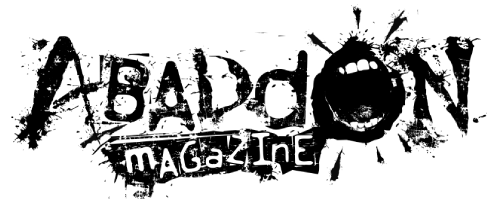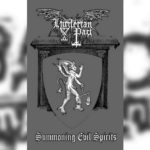Publisher: Službeni glasnik
Year: 2022
This is not my first rodeo with Mr. Gajić. You can find my thoughts on his previous book on these pages as well. In fact, this is now looking more and more like a whole series of books dissecting the brightest artistic minds behind rock ‘n’ roll scene in the area of former Yugoslav republics. It’s, of course, just my idea, especially since I’ve grown very fond of Mr. Gajić’s style of writing, as well as his approach to the subjects at hand. Plus, as he himself declared in both his works, there is a gaping hole when it comes to serious studies of poetry behind Yugoslav rock ‘n’ roll. From the perspective of literary sciences, naturally.
I can understand that both these published works stem from an already established bases; namely, the author’s doctorate and magistrate thesis. Still, while these two served an initial purpose to Mr. Gajić himself, being out in the open leads me to believe they are highly needed in a much wider spectrum than the scriptorium of a university. Particularly since they are clearly linked to popular music, literature and art in general.
Now, when it comes to this book in particular, the first thing that needs an explanation, especially for English speaking population, is the figure of Milan Mladenović. When I reviewed Mr. Gajić’s previous book, I mentioned the top three most influential musicians in this part of the world, without naming the trio itself. One of them was the subject of the previous publication, Mr. Branimir Džoni Štulić. Another one, and likely the most revered one, is definitely Mr. Mladenović. His work in three extremely important bands for new wave and rock ‘n’ roll in old Yugoslavia is, to this day, unsurpassable. Just naming bands that look to his lyrics and music for inspiration would be a wholesome task.
Seek and listen to Ekatarina Velika, Šarlo Akrobata and Rimtutituki. And if you’re feeling a bit more playful, try Angel’s Breath.
But, we’re here to talk about poetry. And there’s a reason for there being so much talk of Mr. Mladenović. His incredible use of symbols leads to an insane amount of diverse understandings of his work. Rarely clear or direct in his messages, Mr. Mladenović left a whole lot of room for interpretation. To a point where there are songs I understood completely differently than Mr. Gajić. And they seem entirely logical in both versions. Basically, the author and I aren’t in disagreement – not for a single line of the book – though pertaining each to our own side. Rather, we are in a debate, discussion, both capable of presenting our arguments and agreeing to their respective possible correctness.
Herein lays the core of Mr. Mladenović’s message (and a point where the author and I have a completely unique opinion). The message is one of tolerance, love and collective effort towards the progress of mankind. He presented it with words that weren’t easy or simple, just like the end result of such strivings as his own weren’t easy to achieve. Even in the moments when everything seemed lost and the country he grew up in fell into the deepest, darkest abyss, both physically and spiritually, he kept his head up high. Milan, more often than not, remained a believer in what seemed to be a distant, never to be achieved, fairy-tale ending.
Oh, it seems like I’m straying away from the book itself… At least now you’re more familiar with the persona this book is here to explore.
What concerns Mr. Gajić’s work, I’m glad to see this book an improvement from the previous one. From my viewpoint, of course, since both these works are academically acclaimed and therefore already declared highly successful. What’s more, “Rok poeta Milan Mladenović” seems to be a step forward in all the directions I mentioned faulty with the author’s previous publication.
This one also introduces us into rock poetry on a global scale first before focusing on the local scenery. Naturally, the author doesn’t want to repeat himself, so he offers other examples and much more suitable to the life and work of Milan Mladenović. However, this time he keeps this introduction relatively short and to the point, even if he presents a vast array of poets / musicians that all lead to the appearance of one like Mr. Mladenović. Starting from ancient Greece, through Middle Age Serbia, to origins of Yugoslav romanticism and rock ‘n’ roll. An introduction worthy of an immensely important figurehead of local scene.
Narrowing it down, the author follows his subject through ups and downs of Milan’s personal life and how it affected his creations. While doing so, Mr. Gajić gives us examples of those influences that show through in Mladenović’s poetry. At the same time, there are also examples of a few directions the poet most frequently explored. Both in topic and style of execution. In that regard this book follows the template set with “Rok pesnik Branimir Džoni Štulić”.
And then there’s the neatest thing about this tome. The creation of Mr. Mladenović is much further explored and in much more detail than that of Mr. Štulić in the other one. I mean, sure, Mladenović’s work is much deeper and more prone to interpretation by professionals and scholars. Hence, the final piece of the puzzle.
The final chapter of the book one by one portrays all the releases Mr. Mladenović coloured with his words, voice and guitar. Focusing equally on music and lyrics, as well as artwork, these are brilliant reviews of these releases explaining the stories that go with them, inner workings of a band and individuals within. Mr. Gajić proves himself not only musically literate or, as is expected, skilled with words and a professional philologist. He displays a level of dedication to music and depths to which he felt the tunes he is writing about. And yes, I felt jealous a lot considering I’m still incapable of wording those feelings music induces like Mr. Gajić did in this book. Reading these reviews – as per author’s recommendation while listening to the records – one can really dive much further into these works of art.
The book ends abruptly. With the end of Milan’s final album. Or rather, in this case, its review. That could be considered a massive fault, however, it parallels Milan’s tragic fate.
Anyway, the whole thing got me thinking. There’s been a number of publications regarding Ekatarina Velika and Milan Mladenović or his bandmates. Some of them explored their art, some were purely biographical and there were collections of different texts or interviews with the band. Yet, there were none as complete as this one. Concretely, I’ve come to believe this is the only correct way to write an artist’s biography. When you think about it, each artist would like to be remembered for his art. In almost completely shutting out every aspect of Milan’s life but what was most necessary for development of his art, Mr. Gajić presented the artist exclusively through the prism of his art.
And that my dear readers is where this book is an absolute success, a much needed publication that can finally answer some questions, though with this type of artists it is always relative, or at least offer ways to understand how an infinitely creative mind functions in the whirlwinds of existence.






